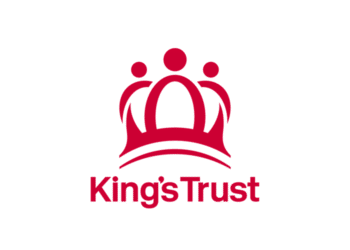What if we could actually reverse the damage done to our marine ecosystems? Many believe ocean plastic pollution is an unsolvable problem, but one organization proves otherwise.
Founded in 2013 by Dutch inventor Boyan Slat, this nonprofit engineering group develops technology to extract plastic pollution from oceans and intercept it in rivers. Their headquarters in Rotterdam coordinates global operations with 145 dedicated staff members.
The ambitious goal focuses on cleaning up 90% of floating ocean plastic by 2040. Current deployments span multiple continents, including the Great Pacific Garbage Patch and key rivers in Indonesia, Guatemala, and the United States.
Remarkable results show over 30 million kilograms of plastic removed from waters as of June 2025. This action demonstrates that large-scale environmental cleanup is achievable through innovation and collaboration.
Key Takeaways
- The Ocean Cleanup is a Dutch nonprofit organization founded in 2013
- They develop advanced technology to remove plastic from oceans and rivers
- Operations span across multiple continents and major water bodies
- Over 30 million kilograms of plastic removed as of 2025
- Goal to clean 90% of floating ocean plastic pollution by 2040
- Works with corporate partners including Kia, Maersk, and Amazon Web Services
- Combines scientific research with practical engineering solutions
Introducing The Ocean Cleanup Mission
A teenage inventor’s bold idea sparked a global movement against marine debris. This ambitious effort combines cutting-edge technology with environmental purpose.
The mission addresses one of our planet’s most pressing challenges through innovative engineering solutions.
Our Origin Story: From Dutch Innovation to Global Impact
In 2013, an 18-year-old Dutch inventor presented a revolutionary concept during a TEDx talk. Boyan Slat‘s proposal challenged conventional thinking about marine conservation.
Initial designs featured fixed barriers anchored to seabeds. Years of research and testing transformed these into efficient drifting systems.
The organization’s journey represents an extraordinary evolution. What began as a student project now operates across multiple continents with international recognition.
Boyan Slat’s leadership earned prestigious awards including London Design Museum’s Design of the Year in 2015. This recognition validated the project’s innovative approach.
The Vision: A Plastic-Free Ocean by 2040
The core objective targets a 90% reduction in floating plastic pollution by 2040. This ambitious goal drives all operational decisions and technological development.
A dual strategy forms the foundation of this vision. Ocean systems tackle existing pollution while river interceptors prevent new debris from entering seas.
System deployments have scaled dramatically from initial prototypes. The current 2.2-kilometer System 03 operates in the great pacific garbage patch, representing significant technological advancement.
River operations expanded beyond single interceptors to comprehensive programs. The 30 cities initiative aims to reduce river plastic pollution by one third by 2030.
Strategic collaboration enhances global impact and scalability. Partnerships with the United Nations Development Programme and various governments strengthen the mission’s reach.
The ultimate goal involves making the organization obsolete by achieving clean oceans. This forward-thinking approach combines immediate action with long-term systemic change.
The Global Plastic Pollution Crisis
Our planet faces an environmental challenge of staggering proportions. Plastic waste has created a worldwide problem affecting every corner of our oceans.
Trillions of Pieces Polluting Our Oceans
Current estimates reveal over 5 trillion pieces of plastic pollution circulate in marine environments. This debris accumulates in massive garbage patches across the world’s oceans.
The Great Pacific Garbage Patch contains approximately 1.8 trillion plastic pieces. This accumulation covers 1.6 million square kilometers – three times France’s size.
Microplastics under 0.5 cm constitute 94% of these pieces. They represent only 8% of the total mass due to their tiny size.
Research shows plastic enters oceans at 1.15-2.41 million metric tons yearly. Asian rivers contribute 86% of this total inflow.
Plastic accumulation in ocean gyres has grown exponentially since the 1970s. This mirrors global plastic production increases.
Impact on Marine Ecosystems and Human Health
Marine wildlife suffers devastating consequences from plastic pollution. Millions of animals die annually from entanglement and ingestion.
Microplastics enter the human food chain through seafood consumption. Potential health impacts include endocrine disruption and toxic chemical exposure.
Plastic debris persists for decades while breaking into smaller particles. It continuously releases toxic additives into marine environments.
The economic impact exceeds $13 billion annually in ecosystem damage. This includes tourism losses, fisheries decline, and cleanup costs.
Certain plastic types dominate pollution in ocean garbage patches. Fishing gear and single-use items represent the most common debris.
The Ocean Cleanup’s Dual Strategy Approach
Effective environmental solutions require addressing problems at multiple levels. This organization’s comprehensive method tackles marine debris through simultaneous interventions.
Their innovative approach combines source prevention with existing pollution removal. This creates a complete solution for plastic contamination in marine environments.
Intercepting Plastic at the Source: River Cleanup Systems
Strategic river interventions form the first line of defense against marine pollution. These systems capture debris before it reaches open waters.
Research reveals startling efficiency in targeted approaches. Just 1% of global waterways contribute 80% of ocean plastic pollution.
Interceptor deployments focus on approximately one thousand critical rivers worldwide. Each installation adapts to local conditions and flow patterns.
Various barrier designs accommodate different river environments. These range from slow urban waterways to fast-flooding tropical rivers.
The catch mechanism operates continuously with minimal human intervention. Solar-powered systems convey debris onto conveyor belts for collection.
Cleaning Accumulated Pollution: Ocean Systems
Massive garbage patches require specialized technology for effective cleanup. These concentrations form in specific ocean regions due to current patterns.
Large U-shaped barriers create efficient collection systems when towed by vessels. This design allows plastic to concentrate toward the central extraction point.
The plastic great pacific garbage patch receives particular attention from operations. This area contains the highest concentration of floating debris worldwide.
Technologies rid oceans of legacy pollution through systematic extraction. Collected material undergoes proper recycling and disposal processes.
Each deployment generates valuable data for improving future operations. Continuous refinement enhances both efficiency and environmental safety.
Evolution of Cleaning Technology
Innovation drives progress in environmental technology. Constant refinement transforms early concepts into powerful solutions.
Each new deployment builds upon previous lessons learned. This approach creates increasingly effective cleanup systems.
From System 001 to System 03: Continuous Innovation
Initial ocean cleanup launches began with System 001 in 2018. This 600-meter barrier faced mechanical challenges during its first deployment.
It collected just two metric tons of debris. The system demonstrated proof of concept despite limitations.
System 002 arrived in 2021 with major improvements. Nicknamed “Jenny,” it used active towing by two vessels.
This configuration captured 150,000 kilograms from the plastic great pacific garbage patch. The technologies rid oceans of pollution more effectively.
System 03 represents the latest advancement in 2023. This massive 2.2-kilometer barrier offers five times the capacity of its predecessor.
Enhanced marine animal protection systems ensure safer operations. The Marine Animal Safety Hatch (MASH) provides escape routes when cameras detect wildlife.
Interceptor Systems: Adapting to Different River Conditions
River interception technology has evolved through multiple generations. Each design addresses specific environmental challenges.
Original solar-powered systems debuted in 2019. Newer models include Barrier + Tender, Guard, and Barricade configurations.
These systems handle various river widths and flow speeds. They capture different types of debris effectively.
The Interceptor Barricade handles extreme conditions in tropical rivers. A Guatemala deployment proved remarkably effective during heavy rainfall.
This system captured 1,400,000 kilograms of waste in just hours. It demonstrated incredible capacity during April 2024 floods.
Each technological iteration incorporates field data from previous deployments. Reliability improves across diverse environmental conditions.
These technologies rid oceans of future pollution by intercepting debris at its source. Continuous innovation makes river cleanup more efficient.
Current Global Deployments and Operations
Massive cleanup efforts span continents and waterways. These activities demonstrate real progress against plastic pollution.
Operations happen across diverse environments around the world. Each deployment adapts to local conditions and challenges.
Pacific Ocean: System 03 in the Great Pacific Garbage Patch
System 03 represents the largest cleanup technology deployed to date. This massive barrier operates in the Pacific’s plastic accumulation zone.
It has removed nearly 500,000 kilograms of debris as of August 2025. Regular extraction activities maintain continuous plastic removal.
Operations target high-concentration areas identified through advanced mapping. This approach maximizes efficiency in debris collection.
River Interceptors Worldwide: From Guatemala to Indonesia
Interceptor systems operate across multiple continents. These installations prevent plastic from reaching open waters.
Guatemala’s Rio Las Vacas hosts remarkably productive operations. Interceptor 006 captured over 1.5 million kilograms by June 2024.
Indonesia maintains two crucial river deployments. Interceptor 001 in Jakarta and Interceptor 020 in Cisadane River address significant pollution sources.
Malaysia’s Klang River features two interceptors tackling Southeast Asian pollution. These systems catch debris in one of the region’s most affected waterways.
Jamaica established the most comprehensive program with nine systems. Kingston Harbour gullies receive city-wide protection against marine pollution.
United States operations include Ballona Creek in Los Angeles County. Interceptor 007 removed 77 tons during recent storm seasons.
Thailand recently expanded efforts with Interceptor 019 in Bangkok. This deployment addresses the Chao Phraya River’s contribution to ocean debris.
Dominican Republic’s Santo Domingo deployment protects Caribbean ecosystems. Interceptor 004 prevents waste from entering sensitive marine environments.
Vietnam contributes to global efforts with its own interceptor deployment. These coordinated activities demonstrate worldwide commitment to solving plastic pollution.
All operations share data through centralized monitoring systems. This allows best practices to spread across different geographical contexts.
Measuring Impact: Tons of Plastic Removed
Documented success stories reveal the scale of impact from systematic cleanup operations. Quantitative metrics provide clear evidence of environmental progress.
Regular reporting maintains transparency across all removal activities. This data-driven approach validates the effectiveness of current methodologies.
Ocean Cleanup Milestones: Millions of Kilograms Extracted
Ocean operations have achieved remarkable extraction volumes to date. System 03 removed nearly 500,000 kilograms from the Great Pacific Garbage Patch by August 2025.
Individual catches sometimes exceed 11,000 kg during optimal conditions. System 002 set a record with 11,353 kg in one extraction.
The cumulative total reached 30 million kilograms removed by June 2025. This represents a massive reduction in floating marine debris.
River Interception Records: Preventing Plastic Entry
River systems demonstrate extraordinary efficiency during peak flow events. Interceptor 006 in Guatemala captured 89 truckloads in just one day.
Seasonal floods in Rio Las Vacas yielded over 1,000 truckloads of waste. This prevented massive amounts of debris from reaching the Caribbean Sea.
Progress accelerated dramatically throughout 2024. The organization passed 10 million kilograms in April and reached 15 million by June.
These interception activities significantly reduce marine pollution at its source. They complement ocean cleanup efforts worldwide.
Transparent metrics appear in annual reports and social updates. This accountability ensures accurate impact measurement across all operations.
Scientific Research and Data Collection
Data-driven approaches transform how we understand marine pollution. Comprehensive studies provide the foundation for effective environmental management.
These research activities help solve the global plastic problem through evidence-based solutions.
Mega Expedition and Aerial Surveys: Mapping Pollution
The 2015 Mega Expedition involved thirty vessels covering 3.5 million square kilometers. This massive operation collected unprecedented data on plastic concentration and distribution patterns.
Researchers gathered critical information about debris accumulation in the Great Pacific Garbage Patch. Their findings revealed the true scale of this environmental challenge.
Aerial Expedition 2016 used specially equipped C-130 Hercules aircraft. These flights conducted the first comprehensive surveys of ocean garbage patches worldwide.
The aerial missions particularly targeted large debris items and ghost nets. This innovative approach complemented surface-based research methods.
Published Findings on Plastic Distribution and Degradation
Groundbreaking research published in Nature Communications (2017) developed a new model. It estimated that 1.15-2.41 million metric tons of plastic enter oceans annually.
The study revealed that 86% of this pollution comes from Asian rivers. This finding directly informed river interception strategies.
A 2018 Scientific Reports publication estimated the Great Pacific Garbage Patch contains 1.8 trillion pieces. Microplastics comprised 94% of pieces but only 8% of the total mass.
Studies on plastic degradation showed current microplastics largely originate from plastic produced in the 1990s or earlier. This highlights the persistent nature of plastic pollution in marine environments.
2020 research demonstrated that surface plastic gradually breaks into microplastics that sink. Surprisingly, 90% of debris remains in the top 5 meters of water.
Recent 2023 findings showed no elevated densities of neuston within plastic hotspots. This addressed important environmental impact concerns about cleanup operations.
The organization developed The Ocean Cleanup Survey App to enable citizen scientists. This tool allows broader participation in ocean plastic mapping and data collection.
Research methods include surface net tows, aerial photography, and computational modeling. Laboratory analysis examines plastic samples for polymer composition and pollutant content.
Scientific publications appear in leading peer-reviewed journals including Nature Communications. These contributions advance global understanding of marine pollution management.
Partnerships and Global Collaborations
Global challenges demand global solutions. This effort brings together diverse partners from corporate and government sectors.
These collaborations create powerful synergies across different fields. They combine resources and expertise for maximum impact.
Corporate Partnerships: Kia, Maersk, and AWS
Major companies provide crucial support through various partnerships. Each brings unique capabilities to the mission.
Maersk Supply Service offers vital shipping and logistics assistance. Their vessels transport systems to remote ocean locations.
Kia established a seven-year funding partnership for new interceptor construction. They also incorporate recycled material into vehicle manufacturing.
Amazon Web Services collaborates on artificial intelligence applications. Their technology helps optimize cleanup operations through advanced analytics.
Hyundai Glovis enhances global logistics capabilities across continents. This support enables efficient equipment transportation.
Salesforce contributes technical expertise and operational support. These corporate relationships often include both financial and in-kind contributions.
Government and UN Collaborations
International cooperation extends to governmental and United Nations agencies. These partnerships create policy frameworks and operational support.
The United Nations Development Programme supports river cleanup initiatives worldwide. This collaboration integrates interceptors into broader waste management strategies.
Dutch government backing enables high seas operations. This national support demonstrates commitment to solving marine pollution.
Multiple governments participate in deployment activities across different regions. Malaysia, Indonesia, and Guatemala host important river interceptor programs.
Jamaica established comprehensive protection with nine systems. Thailand recently expanded efforts with new deployments in Bangkok.
Participation in UN Ocean conferences contributes to global policy discussions. This engagement presents technological solutions to international stakeholders.
Local government collaborations ensure proper waste management infrastructure. They create complete solutions from capture to responsible disposal.
International partnerships form a global network of support. This enables scaling operations across diverse geographical and cultural contexts.
Funding the Cleanup: Sustainable Financial Model
Large-scale environmental operations require substantial financial backing. This organization has developed innovative funding approaches that ensure long-term viability.
Multiple revenue streams support global activities across continents. This diverse approach creates financial stability for ongoing operations.
Crowdfunding and Major Donor Support
Initial public backing came through a 2014 crowdfunding campaign. It raised over $2 million from thousands of supporters worldwide.
This early success demonstrated strong public interest in ambitious environmental solutions. Individual contributions continue through ongoing donation programs.
Major philanthropic gifts provide significant financial support. Joe Gebbia contributed $25 million in 2023, representing the largest private donation.
Other notable donors include Salesforce CEO Marc Benioff and investor Peter Thiel. Their support enables expansion of cleanup activities around the world.
This diverse donor base ensures stable funding for long-term operations. It combines grassroots support with major philanthropic investments.
Product Sales and Corporate Sponsorships
Creative product development generates additional revenue streams. Sunglasses made from certified ocean plastic sold 21,000 units at €200 each.
These products underwent rigorous certification by DNV GL. This ensured transparency about material origins from the Great Pacific Garbage Patch.
Renowned designer Yves Béhar created the product designs. This collaboration combined environmental purpose with high-quality aesthetics.
Corporate partnerships form another crucial funding component. Kia established a seven-year sponsorship agreement for new interceptor construction.
Maersk provides ongoing shipping services and logistical support. Other partners include Coca-Cola and Royal DSM.
The #TeamSeas campaign raised $30 million through YouTube creators in 2021. Approximately $15 million supported this organization’s activities.
Macquarie Group Foundation awarded 10 million AUD in 2019. This recognized innovative approaches to environmental challenges.
Financial transparency includes public reporting on fund allocation. The 2022 budget reached €54.705 million for global operations.
Cost efficiency has improved significantly over time. The 2022 removal cost was approximately €49.4 per kilogram of plastic.
This sustainable funding model combines multiple revenue sources. It ensures continued operations across diverse geographical contexts.
Environmental Considerations and Safety Measures
Environmental solutions must balance effectiveness with ecological responsibility. This organization prioritizes protection while tackling plastic pollution.
Advanced systems incorporate multiple safeguards for wildlife. Continuous monitoring ensures operations cause minimal disruption.
Marine Animal Protection Systems
Specialized technology prevents harm during cleanup activities. The Marine Animal Safety Hatch uses underwater cameras.
These cameras monitor the retention zone constantly. They activate escape routes when detecting wildlife.
Mesh size increased from 10mm to 15mm in newer systems. This allows smaller organisms to escape while capturing debris.
Independent assessments guide design improvements for ecosystem safety. Research collaborations with biologists enhance protection measures.
Addressing Efficacy and Impact Concerns
Recent studies examined potential ecosystem effects. Research showed no elevated neuston densities in plastic accumulation zones.
This addressed concerns about surface-dwelling organisms. Portuguese man-o-war and sea snails showed normal distribution patterns.
Cost efficiency improves as technology evolves. Systems now remove plastic at progressively lower cost per kilogram.
Transparent data sharing allows independent verification. Published findings demonstrate responsible environmental management.
Adaptive approaches enable quick response to observations. Systems modify based on real-world performance data.
The precautionary principle guides all operations worldwide. This ensures minimal harm even without complete certainty.
Continuous monitoring occurs during every extraction. Data collection helps assess and mitigate potential negative effects.
Conclusion: Joining the Global Cleanup Movement
Joining this global movement offers diverse opportunities for meaningful environmental contribution. Everyone can participate through various support channels that advance the mission.
Individuals provide essential funding through website donations. Career opportunities exist for engineers and researchers developing cutting-edge technology.
Social media engagement spreads awareness about plastic pollution solutions. Corporate partnership programs align businesses with sustainability goals.
Local communities near interceptor operations participate in waste management partnerships. Educational resources keep supporters informed about progress and challenges.
This organization demonstrates that large-scale environmental challenges can be addressed through innovation and collaboration. Success depends on continued worldwide support from all sectors.
Join the movement today through whatever means match your capabilities. Every contribution accelerates progress toward plastic-free oceans by 2040.
FAQ
What is the Great Pacific Garbage Patch?
The Great Pacific Garbage Patch is a massive collection of floating debris in the North Pacific Ocean. It consists of trillions of plastic pieces, ranging from large items to microplastics, concentrated by ocean currents.
How does System 03 work to clean up ocean plastic?
System 03 is a large, U-shaped barrier that moves slowly with wind and waves. It concentrates plastic debris, which is then extracted and brought to shore for recycling. The system includes features to protect marine life during operations.
What are Interceptor systems and where are they deployed?
Interceptor systems are solar-powered, autonomous barriers placed in rivers to catch plastic before it reaches the sea. They operate in multiple countries, including Guatemala, Indonesia, and Malaysia, adapting to various river conditions.
How much plastic has been removed from oceans and rivers so far?
Millions of kilograms have been extracted from the Great Pacific Garbage Patch using ocean systems. River Interceptors have prevented substantial additional waste from entering marine environments, with ongoing public reporting of collected amounts.
Who supports The Ocean Cleanup financially?
Funding comes from a mix of corporate sponsors like Kia, Maersk, and Amazon Web Services, alongside individual donors, crowdfunding campaigns, and revenue from recycled plastic products.
What happens to the plastic after it’s collected?
Collected plastic is brought to land for processing. It is recycled into durable products, with proceeds helping to fund continued cleanup operations, creating a circular economy model.
How does the organization ensure marine life safety during cleanups?
Systems include protective measures like escape routes for animals and real-time monitoring. Independent observers help minimize bycatch and ensure environmentally responsible operations.
What role does research play in The Ocean Cleanup’s strategy?
Scientific studies, including large-scale expeditions and aerial surveys, inform technology design and deployment. Research helps understand plastic distribution, degradation rates, and pollution sources.





